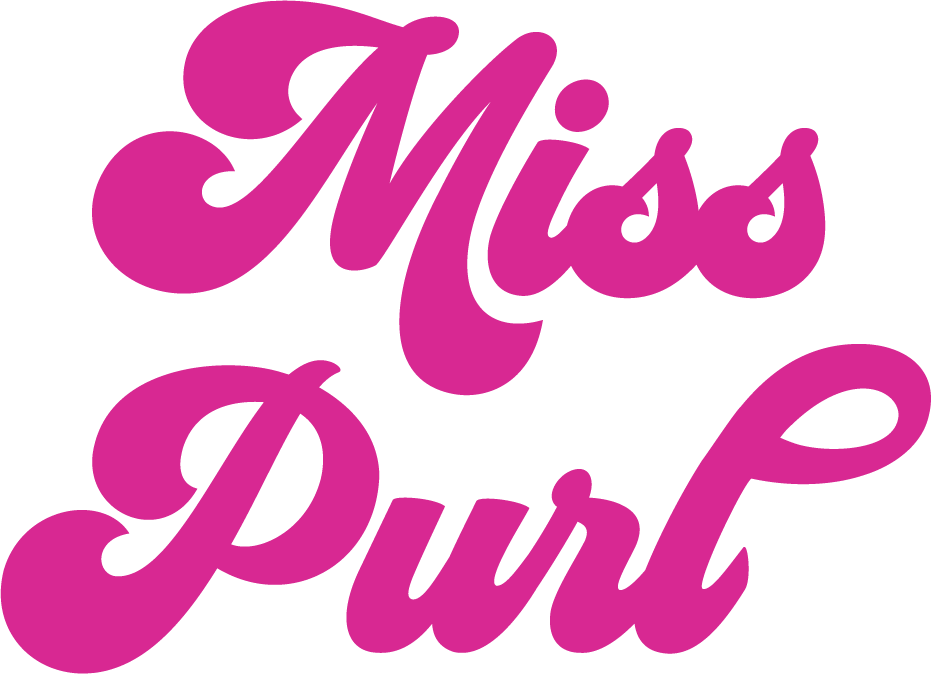Level Up Your Crochet: Get Comfortable with Reading Symbols
A Beginner’s Guide
to Crochet Symbols for
Creative Freedom
Get comfortable with crochet charts and unlock a world of intricate stitch patterns and design combinations. In this article, we'll help you dip your toes into the art of navigating crochet charts and symbols. We'll tackle common pitfalls and share a personal story of creative growth. Plus, don't miss out on Miss Purl’s January Workshop: Mastering Crochet Patterns, where you'll gain the skills to confidently crochet from a stitch diagram or chart.
If you've ever felt overwhelmed by crochet patterns, you're not alone. Decoding crochet symbols and charts can seem like learning a new language, but once you get the hang of it, a whole new world of creativity opens up. Let’s explore the basics of reading crochet patterns, focusing on understanding symbols and charts.
A Personal Story
After learning to the Single Crochet stitch, I made loads of blankets and scarves. When I got a more adventurous, I’d try to reverse engineer a hat with the Half-Double Crochet stitch (my favorite stitch). I loved the freedom of creating projects without a pattern, letting my imagination guide each stitch. While this approach allowed for a lot of creativity, I often found myself limited to basic stitches and simple designs. I longed to incorporate more intricate patterns and textures into my work but didn't know where to start.
Everything changed when I improved my fluency in crochet chart reading. At first, the symbols and grids seemed daunting, but with practice, they began to make sense. Suddenly, a whole new world of possibilities opened up. I could now understand and recreate complex stitch patterns that I had previously only admired from afar.
Learning to read charts didn't just expand my technical skills; it also sparked my creativity. Reading patterns allowed me to enjoy other designer’s work, which in turn improved my intuitive understanding of a garment’s construction. From there, I started combining different stitch patterns to create unique, one-of-a-kind pieces, with and without patterns! The ability to visualize and plan my projects using charts allowed me to experiment with new techniques and designs that I had never thought possible.
One of my favorite projects was a blanketl that combined several intricate stitch patterns. Using charts, I was able to seamlessly integrate motifs like shells, fans, and picots into a cohesive design. The result was a stunning gift that received countless compliments. I was so proud of myself.
How Charts Are Used in Patterns
Crochet charts are visual representations of crochet patterns, offering a clear and concise way to follow a design. Unlike written instructions, which can be lengthy and sometimes confusing, charts provide a bird's-eye view of the entire pattern. By using charts, you can visualize the entire pattern at a glance and understand the overall design. They are especially useful for intricate patterns with repeating motifs, as they provide a clear roadmap for your project.
Here's how crochet charts and diagrams work:
Layout and Structure: Crochet charts are for row-based patterns. They demonstrate a linear progression are typically laid out in a grid format, with each square representing a stitch. Stitch diagrams and crochet-in-the-round patterns are demonstrate a spiral progression and will have a circular layout.
Symbols and Notations: Each type of stitch is represented by a unique symbol. For example, a small circle indicates a chain stitch, while a plus sign or lower-case x represent a single crochet. These symbols are standardized, making it easier to follow patterns from different sources once you're familiar with them.
Direction of Reading: The direction in which you read the chart depends on whether you're working in rows or rounds. For rows, you'll alternate reading from right to left and left to right. For rounds, you'll typically read in a continuous spiral. The diagram will include a starting point symbol for circular layouts.
Key and Legend: Most charts come with a key or legend that explains the symbols used.
Common pitfalls and how to avoid them:
Misinterpreting Symbols: Always refer to the key or legend provided with the chart to ensure you're using the correct stitch.
Skipping Stitches: It's easy to accidentally skip a stitch, especially in complex patterns. Learn to read and count your stitches regularly to make sure you're on track
Reading Direction Errors: Remember to read the chart in the correct direction. For example, row-by-row crochet charts are read from bottom to top, and from right to left, for each row – mirroring the way you crochet. Left-hand crocheters follow the chart, bottom to top, and from left to right.
Not understanding that different yarns and hook sizes can affect the final size of your project. Always check your gauge before starting to ensure your finished piece matches the pattern's dimensions. Miss Purl is hosting a class on choosing and substituting yarns on January 31.
Overlooking Pattern Notes: Charts often come with additional notes or instructions. Make sure to read these carefully, as they can provide crucial information about the pattern.
Make it stand out
Sign-Up for the Miss Purl January Workshop: Mastering Crochet Patterns January 17
Did this article pique your interest to master crochet patterns and diagrams? Register now for Miss Purl’s upcoming workshop on decoding crochet symbols and charts! You'll enjoy hands-on experience, personalized guidance, and the confidence to tackle any pattern. Sign up to unlock the full potential of your crochet projects.
I love the interactive format of the workshop of Miss Purl classes. Kamaca is very patient and knowledgeable. learned so many new tips and tricks. Highly recommend it to anyone looking to improve their crochet skills!" - Miss Purl class participant




